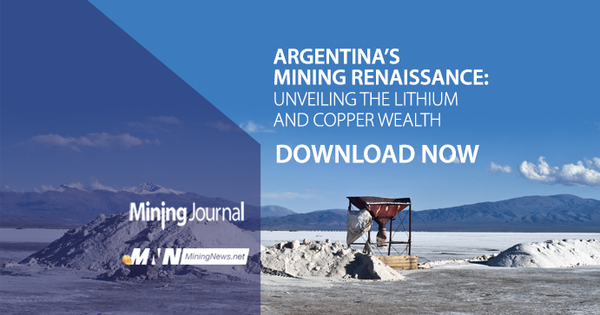Argentina has emerged as a significant player in the global mining sector, leveraging its abundant natural resources to meet rising international demand for critical minerals. The South American nation, particularly known for its vast lithium reserves in the Salinas Grandes and Hombre Muerto salt flats, has positioned itself among the world’s top lithium producers at a time when demand for battery materials is surging.
The country’s lithium triangle, which it shares with Chile and Bo
...
Argentina has emerged as a significant player in the global mining sector, leveraging its abundant natural resources to meet rising international demand for critical minerals. The South American nation, particularly known for its vast lithium reserves in the Salinas Grandes and Hombre Muerto salt flats, has positioned itself among the world’s top lithium producers at a time when demand for battery materials is surging.
The country’s lithium triangle, which it shares with Chile and Bolivia, contains approximately 75% of the world’s known lithium reserves. As electric vehicle adoption accelerates globally, Argentina’s lithium industry has attracted substantial foreign investment. Major mining companies and battery manufacturers have established operations in the region, recognizing Argentina’s strategic importance in the transition to clean energy technologies.
Production from Argentina’s salt flats employs a brine extraction process, where lithium-rich saltwater is pumped from beneath the salt flats into evaporation ponds. This method, while less energy-intensive than hard-rock mining, faces scrutiny regarding water usage in the arid Andean region, highlighting the environmental challenges the industry must address.
Beyond lithium, Argentina’s mineral wealth extends to significant copper deposits nestled throughout the Andes Mountain range. The country’s copper potential has gained increased attention as global demand for the red metal continues to climb. Copper, essential for electrical wiring, renewable energy infrastructure, and electronics, has seen price increases in recent years, spurring exploration activities across Argentina’s mountainous regions.
Several major copper projects are currently under development in provinces such as San Juan and Catamarca. These projects represent billions in potential investment and could substantially increase Argentina’s copper output over the coming decade. The timing is fortuitous, as analysts predict a potential global copper deficit as electrification trends accelerate worldwide.
Despite its mineral riches, Argentina’s mining sector faces notable challenges. Environmental sustainability remains a central concern, particularly regarding water usage in lithium operations and potential ecological impacts from copper mining in sensitive Andean ecosystems. Local communities have expressed concerns about resource depletion and contamination risks, creating tension between economic development objectives and environmental protection.
Community engagement has become increasingly critical for mining companies operating in Argentina. Several projects have faced delays or opposition from indigenous communities and environmental groups concerned about impacts on traditional livelihoods and natural resources. Successful mining operations now recognize the importance of meaningful consultation and benefit-sharing arrangements with local populations.
Regulatory uncertainty presents another hurdle. Argentina’s federal system means mining regulations can vary significantly between provinces, creating a complex operating environment. Recent administrations have worked to create more investor-friendly frameworks, but political volatility continues to influence the sector’s development.
The country’s broader economic challenges, including currency instability and periodic capital controls, have complicated investment decisions for international mining companies. However, the strategic importance of Argentina’s mineral resources, particularly in the context of energy transition materials, continues to attract significant interest despite these macroeconomic headwinds.
Looking forward, Argentina’s mining sector appears poised for growth. The global push toward decarbonization has elevated the importance of both lithium and copper, positioning Argentina favorably in future mineral supply chains. Government initiatives to streamline permitting processes and provide investment incentives aim to capitalize on this favorable market outlook.
Industry experts note that responsible development practices will be essential for the sector’s long-term viability. Companies implementing advanced water management techniques, minimizing environmental footprints, and establishing meaningful community partnerships are likely to achieve greater success in this evolving landscape.
As global competition for critical minerals intensifies, Argentina’s role as a key supplier will depend on its ability to balance resource development with environmental protection and social considerations. The country’s mining sector, with its abundant resources and growing production capacity, remains a critical component of the global mineral supply chain in an increasingly resource-competitive world.


